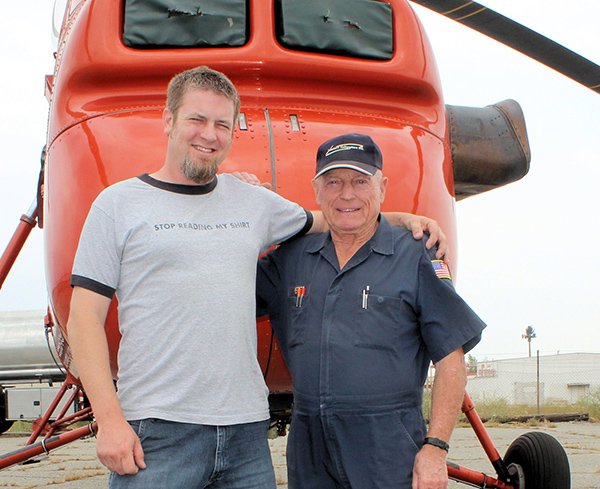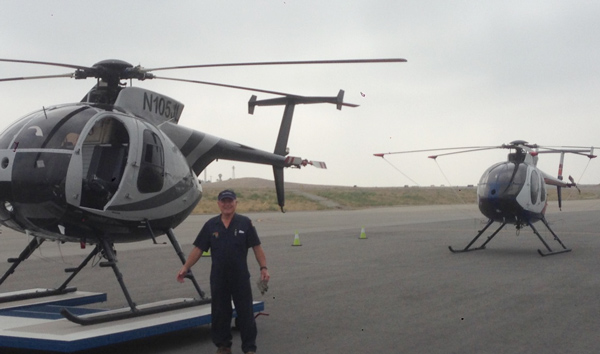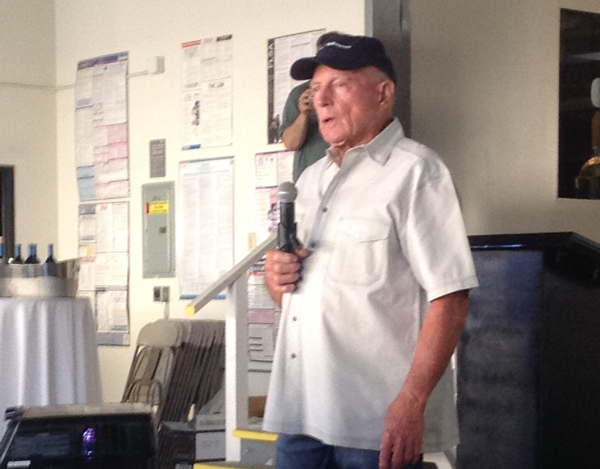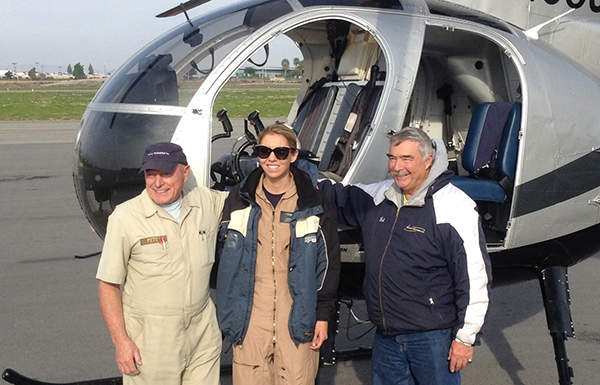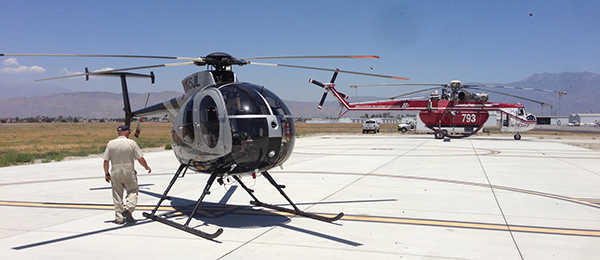Podcast: Play in new window | Download
Subscribe: Apple Podcasts | RSS

The difference between an expensive falling brick and a helicopter is rotor RPM. Pete Gillies talks about the importance of aft cyclic in autorotation entry to conserve rotor RPM in this episode.
Depending on where you did your training this might come across as ‘yeah, of course, doesn’t everyone do this’. If that’s you then fantastic and this interview will give you an in depth refresher on the ‘why’ behind it. If you’ve been out of regular autorotation practice for a while or didn’t have this emphasied then you’ll walk away with a new understanding to take on your next flight. There are a number of links further down the page that go on to show that this knowledge may not be as widely spread as it should be.
As with any flying advice you should discuss it with an instructor that you trust if unsure and apply some sense in how to use it – Pete is obviously not trying to say that aft cyclic must be used religiously for example in a hover engine failure.
[Tweet “A bad ending of an autorotation is usually survivable, but a bad beginning is usually not”]
“The Best Kept Secret in the helicopter industry is how critical it is to immediately apply aft cyclic the moment a loss of power to the rotor system is detected. I have been doing my best to spread this word since analyzing the cause of two law-enforcement helicopter accidents that occurred four months apart in 2002. I call it Cyclic Back.
Very few helicopter pilots realize that if, with a total engine failure, the rotor rpm is allowed to fall more than about 5% below low green, the flight is over. OVER. There is no recovery possible regardless of what actions the pilot may take or how high the helicopter is above ground. This fact is not mentioned in the sales literature for helicopters nor in the approved rotorcraft flight manuals. It is not mentioned in any of our FAA publications having to do with how helicopters fly and how to fly them. It is treated as a deep dark secret, unfortunately.
When power is lost to the rotor system, THE MOST IMPORTANT FLIGHT CONTROL IN THE COCKPIT IS THE CYCLIC! It must immediately be brought aft so that the flow of air is upwards through the rotor system. Bottoming the collective does only one thing: It reduces the rate that the rotor rpm is falling. That’s all! It NEVER stops the fall of rotor rpm.
Once the rotor rpm has dropped below the critical point, recovery is not possible. The helicopter continues to descend as the rotor rpm falls towards zero and may, in the case of free-turbine engines as used in the EC135, be seen to turn backwards. The rotor blades will show little if any damage when the wreckage is examined.
And as the rotor rpm slows towards zero during the descent, retreating blade stall enters the picture. The normal Vne chart does not mention rotor rpm; it is assumed it is normal for the standard mode of flight. But when rotor rpm falls, Vne falls with it, so Vne is very possible at airspeeds much below those computed via the chart.
This in turn means that as the rotor rpm is falling during the autorotation, the helicopter will roll in the direction of the retreating blades, or to the left in the case of the EC135. Any attempt by the pilot to correct this with opposite cyclic simply adds additional pitch to the blades that are already stalling, thereby increasing the amount of roll.
When a helicopter pilot is faced with a sudden unannounced engine or drive-line failure, here is what must be done:
1. Cyclic back and pitch down, simultaneously or in that order.
2. Pick a place to land.
3. MAKE THAT SPOT!
What about indicated airspeed. At the beginning of the autorotation, the ONLY speed that matters is that over the wings, meaning, of course, the rotor blades, and this is a function of rotor rpm. Pitot tube airspeed (indicated airspeed) is not important at that time, but yes, once the rotor rpm is solidly in the green, indicated airspeed can be helpful in extending the glide or reducing the rate of descent.
Finally, this: During a normal power-off autorotation, the helicopter will respond to all flight-control movements the same way it would if the helicopter is in a flat-pitch descent with the engine running. The only thing it won’t do is a sustained climb. But it will stop, back up, turn in any direction, etc. So when I say MAKE THAT SPOT, I’m saying use the maneuverability of the helicopter just as you would if the engine was running. There is more to life than straight-ins, 90s and 180s!” – extract from a post that Pete made on PPRuNe in 2013 (with a typically PPRuNe spirited debate that runs to 28 pages)
As for in Pete’s earlier interview back in Episode 39 we have Douglas Williams to thank for capturing this audio.
[Tweet “The pilots had not applied aft cyclic at the time the engine quit, they had gone for airspeed – Pete Gillies”]
Podcast: Subscribe in iTunes | Play in new window | Download
In the episode:
02:04 Competition for a custom aviation drawing
03:00 Listener comment Andy, 28 SQN OCU
04:20 B206 engine start clip last episode
05:50 Old Bell Helicopters magazine article, 1975 – ‘Keep the rotor in the green’ – redundant?
09:20 Studying accident reports – LAPD Astar overrunning clutch failure
11:15 MD500D ran out of fuel then crash wreckage
15:40 1992 MD500E engine failure on takeoff with crash onto busy road
20:55 Sherif MD600 steep 180 turn following engine failure
25:10 Law enforcement recurrency training using crash photos – lightbulb moment!
28:40 “Immediately put the collective down and immediately nosed over to get airspeed”
30:20 The aircraft were turning left due to below green rotor RPM – retreating blade stall
33:00 Impact on Vne of low rotor RPM
35:00 Emphasis at the time on airspeed in RFM
36:30 Fixed wing comparison
38:45 Reaction time and immediate actions
41:00 Overrunning clutch – engine overspeed but rotor blades slowing
42:00 ‘Aft Cyclic’
44:10 Autorotation training changes
48:15 Completely consumed with the mission and not thinking about engine failure
50:10 The helicopter is happiest in autorotation
51:30 Multiengine helicopters and applicability of ‘Cyclic Back’
53:20 Engine off vs engine idling training autorotations
1:00:20 ‘Aft cyclic’ to be in print, training programs and RFM
1:02:30 Advice on a real world engine failure from Pete
1:08:50 Thanks to Doug Williams
Links from this week’s episode:
Western Helicopters
Marc Philipp Veenendaal’s Instagram account with aviation drawings
Episode Sponsors trainmorepilots.com
Video – Pete Gillies talking to impromptu group about autorotations
[leadplayer_vid id=”56C9A0F1E2306″]
[Tweet “One wing falling off in flight – equivalent to a too low RRPM #helicopter”]
[Tweet “In a real autorotation there is no upper red line on RRPM. Just worry about the bottom one.”]
You can also find more reading on ‘cyclic back’ online: AStar Accident Shines Light On Autorotation Training, AIN Online 2013 , ‘Failure to Enter’,VerticalMag 2013 , Rotorcraft Safety: No Margin for Error, Aviation Week 2014 , Enough skill to kill yourself, 2015
Chapter 43 ‘Autorotation Concerns’ of Helicopter Aerodynamics Volume II by Ray Prouty also cites Pete Gillies when talking about the need to instigate airflow into the disc during autorotation entry in forward flight.
The following is an analogy penned by Randy Rowles, 2013 HAI Instructor of the Year, that provides another approach to discussing the application of aft cyclic in an autorotation entry.
“First, I would like to add to Mr. Pete Gillie’s (Chief Pilot, Western Helicopters) comments regarding the importance of applying aft cyclic when entering an autorotation. As a longtime flight instructor, I couldn’t agree more with Pete as I’m sure most experienced instructors within the helicopter industry would as well. The key to getting the point across on such subjects is providing an example that is relevant to the topic.
I would suggest we provide an example taken from a baseball analogy. Applying aft cyclic when entering an autorotation is a key consideration because you want to present the rotor system to the changing relative wind. This is very similar to explaining HOW to catch a ball in a glove. In simple terms, you MUST present the open glove to the ball for the glove to function.
To properly catch a ball, the glove must be open and presented so that the ball will hit the glove in the pocket. If the glove is face down, the ball will hit the glove and be driven to the ground. If the glove is held upside down, the ball may roll up the glove and hit the person in the mouth, both non-desirable outcomes.
So you see…an analogy of catching a ball in a glove presents the reader with a basic fundamental principle of the interaction of the ball in flight, and how to properly engage the design of a glove to catch the ball. The rotor system works exactly the same way. No matter what the speed of the aircraft, the rotor system MUST immediately be presented to the airflow through the use of aft cyclic during all autorotative entries.”
Custom drawing competition – Final hours
Your chance to win a custom aviation drawing my Marc Veenendaal is almost gone. Leave a comment on Episode 39 about your first helicopter experience to go into the draw.
Do you have an opinion on ‘Cyclic Back’ or additional information to share? Perhaps you’ve had an engine failure and can share how it turned out. Join in the conversation below in the comments


